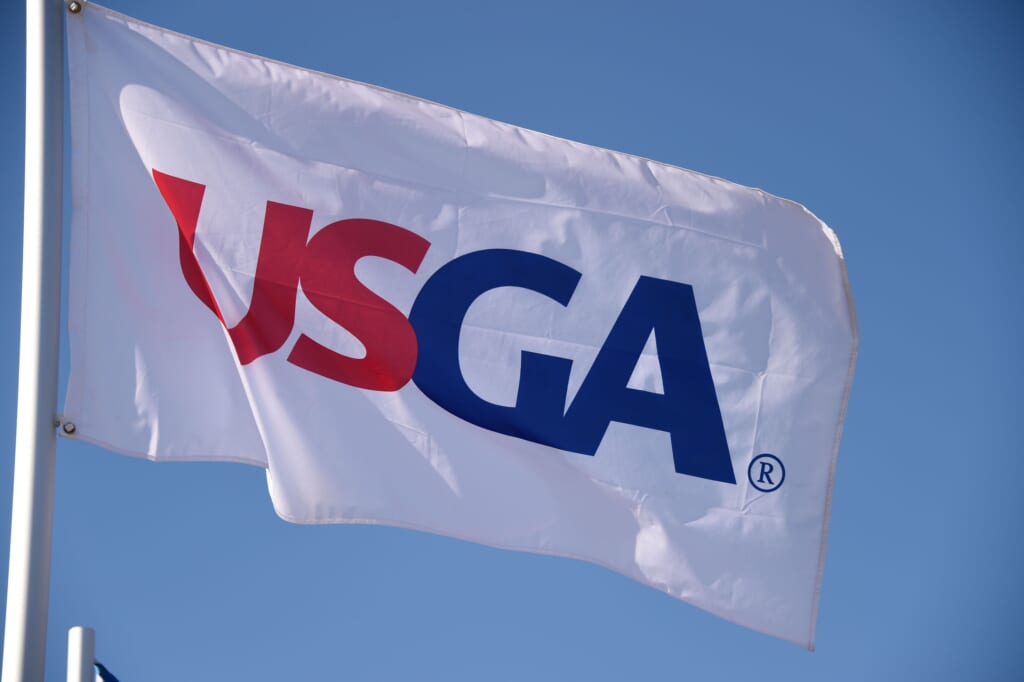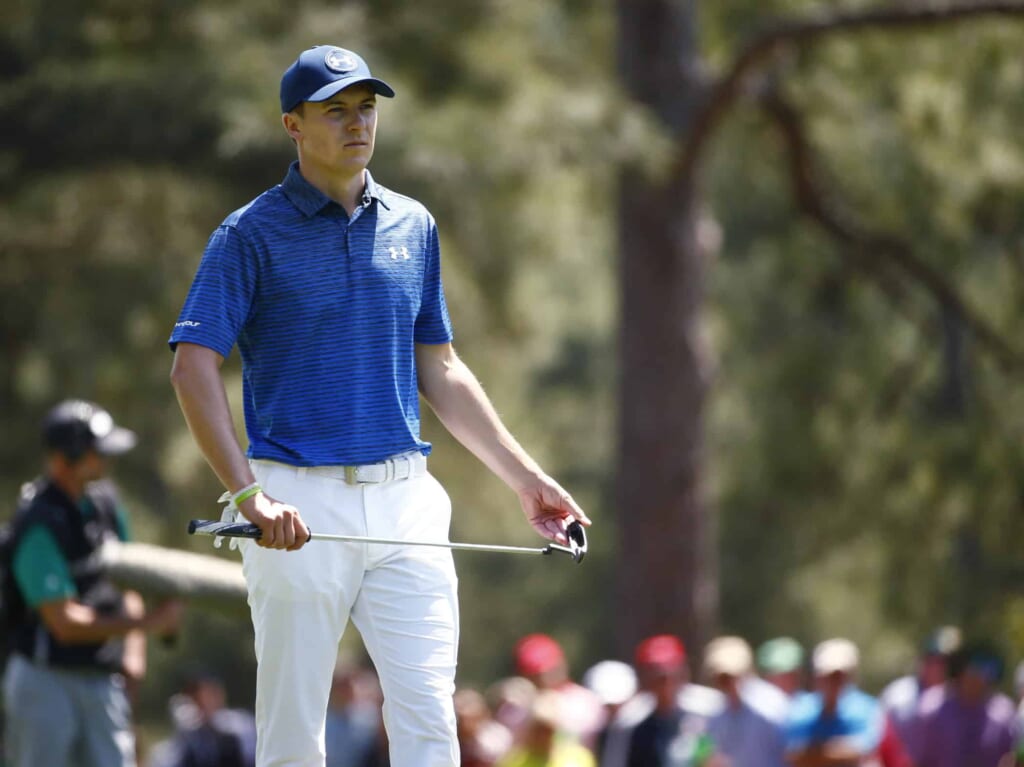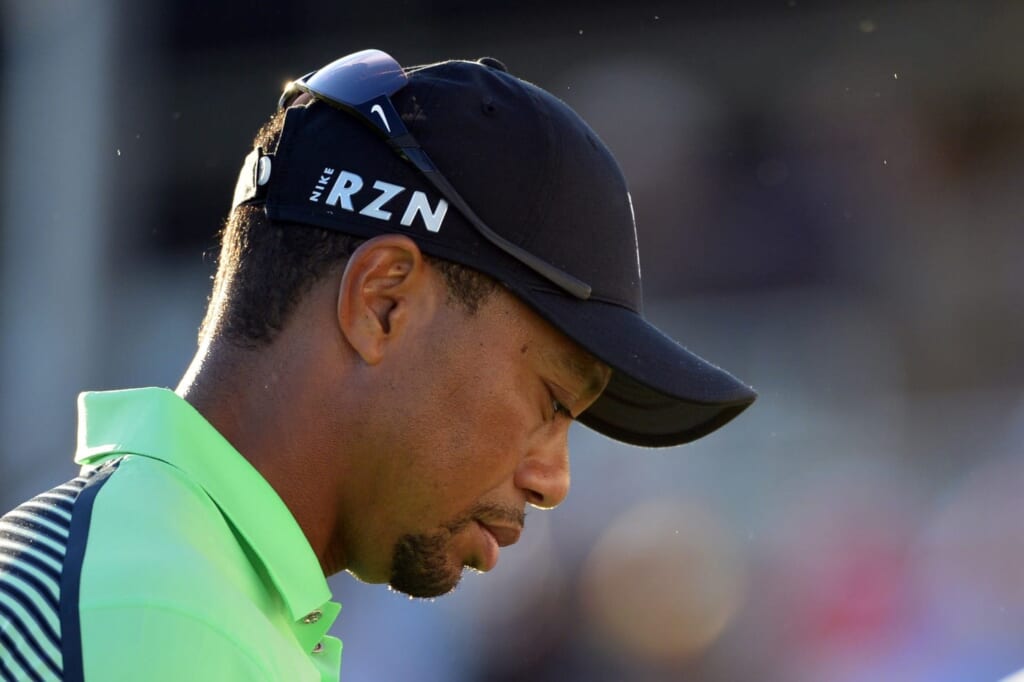
The 2018 U.S. Open is in the books and it had a very similar feeling to 2017. Brooks Koepka became the first man in 29 years to win consecutive U.S. Opens.
We know that Koepka’s achievement is great. But in reality, it’s one of the most impressive things we’ve seen on a golf course in a long time.
Koepka’s accomplishment deserves all the praise that it will get. Similarly, the USGA deserves every bit of scorn that it will get for what happened at Shinnecock Hills on Saturday. Meanwhile, Phil Mickelson didn’t contend, but he actually provided two of the week’s main talking points.
Several other highly ranked golfers, including Lefty’s old rival Tiger Woods, did not even make the cut. What does that mean for these guys?
These are the biggest takeaways from the week at Shinnecock Hills.
1. Brooks Koepka pulls off magnificent double
Entering the week, only 21 golfers had won multiple U.S. Opens, while only six had won it in back-to-back fashion. Both of those clubs added a member this week. For the second straight year, Koepka won the U.S. Open. Really, that’s only part of the story.
The 2017 and 2018 U.S. Opens had almost nothing in common. In 2017 at Erin Hills, Koepka tied the tournament scoring record at 16-under. In 2018, he won at one-over par.
The last man to win consecutive U.S. Opens was Curtis Strange in 1988-1989, the latter of which came a year before Koepka was born. So, anyone winning consecutive U.S. Opens was going to be historic. But pulling this particular double off is, quite simply, one of the greatest accomplishments in golf history.
2. USGA messes up another U.S. Open

We knew it was coming when we saw what the greens looked like before the tournament started. Heck, we knew it was coming last year, when Koepka won the U.S. Open at 16-under and 31 players finished under par. Shinnecock Hills was going to be brutal. We saw it on Thursday, but that was mostly due to the conditions. What happened on Saturday was all on the USGA.
A U.S. Open is meant to be the toughest tournament in the world. That’s known going in. And if this simply a matter of bad shots being penalized, we’d have no problem. But when good starts are punished on pretty much every hole, you have a problem. If a good approach shot can’t hold the green (or even come close, in some cases), you’ve lost the course.
What’s amazing here is that the USGA seems to mess this up on an annual basis. Whether it’s the course setup, a rules debacle (ie: Dustin Johnson in 2016) or something else, the USGA routinely puts its worst foot forward at its biggest event.
3. Phil Mickelson was immature, but don’t overreact
There’s no doubt that Mickelson’s actions on the 13th green on Saturday were immature. It’s not a good example for one of golf’s most well known players to set. That said, people are also overreacting to what happened (like this).
While Mickelson made it out to be strategic, the reality of what happened is different. Not only is it a two-shot penalty (excluding disqualification, the highest penalty that can be given), but the shot at the moving ball actually counts. Had the ball Mickelson hit rolled into the bunker instead, Lefty would have just had to get the ball on the green and down in two from there to offset what actually happened. In fact, since his strike at the moving ball didn’t go in, he likely would have been better off to let the ball roll. It just would have been more time consuming.
Mickelson’s actions were childish. His post-round comments certainly didn’t help his cause. But if we’re trying to figure out if he willfully cheated, let’s ask ourselves this. Do we really think Mickelson does this if he’s in contention? That’s up for us as individuals to decide. But if he would have, it wouldn’t have made a lot of sense.
4. Tommy Fleetwood comes up short, but makes history

Fleetwood’s final round wasn’t quite good enough to win. But that shouldn’t take away from how spectacular it was.
Fleetwood fired a final-round 63, tying the lowest score in U.S. Open history. But the final score isn’t what feels so amazing. What feels so amazing is that it genuinely could have been better. How often can someone say that about any round of golf, let alone the final round of the U.S. Open?
Fleetwood could have made a birdie on any of the final three holes, but instead he walked away with three pars. As a result, he’ll have to settle for tying the lowest round in U.S. Open history. Not a bad consolation prize. Also, in three U.S. Opens, Fleetwood has one T-27, one solo fourth, and now a solo second. It’s a pretty good track record and one to remember as we head into Pebble Beach next year.
5. Big names miss cut
Shinnecock Hills brought many of the best in the world to their knees. Jordan Spieth, Jon Rahm, Rory McIlroy, Jason Day, Sergio Garcia, Bubba Watson, and Matt Kuchar were all ranked in the top 25 entering the week. All went home on Friday. Spieth was the only one in that group within a shot of playing the weekend.
When we call the U.S. Open the toughest tournament in the world, the winning score isn’t the only metric we use. Seeing the world’s best struggle so mightily is another good indicator.
6. Dustin Johnson’s putter lets him down

Johnson entered Saturday with a four-shot lead. Sure, golf’s a crazy game and anything can happen. Even still, it just didn’t seem terribly likely that Johnson, the world’s top-ranked golfer, wouldn’t hold that lead. His putter had other ideas.
DJ’s flat-stick let him down through the final 36 holes. He had six three-putts over the weekend at Shinnecock Hills. Even on tough greens, that’s not going to work.
Johnson’s game doesn’t have many flaws. But he’s had issues with his putter through his career. As we saw this weekend, there’s still work to be done.
7. Patrick Reed falls short in bid for second-straight major
As the Masters champion, Reed entered the 2018 U.S. Open as the only golfer who could have won the single-season grand slam. Not surprisingly, that will not happen. But Reed gave it quite a run.
Reed fought valiantly through the week. He even held a share of the lead on Sunday and ultimately finished in fourth place.
We understand that Reed’s personality isn’t for everyone. He’s a bit brash at times, and he also isn’t terribly outgoing. If you don’t like him, that’s fine. But Reed has long been one of the world’s best player. Now, he’s only getting better. Love him or hate him, we’d suggest you find a way to get used to that.
8. Rough year continues for Jordan Spieth

While Spieth was not the only big name sent home on Friday, his struggles do stand out.
First, Spieth hadn’t missed the cut in a major since the 2014 PGA Championship. Secondly, of the top-25 players in the world to miss the cut, only Spieth and Kuchar have yet to win in 2018. So, it’s much easier to dismiss the struggles of those guys as nothing more than a bad week at a tough course.
That may be all it was for Spieth, as well. But until he wins this year (or at least consistently contends), it’s hard to give him the benefit of the doubt.
9. Phil Mickelson’s career slam hopes look bleak
Lost in the controversy about his Saturday behavior is that Mickelson was nowhere near contention all week.
The good news for Lefty is that the next three U.S. Opens will be played at places where he has a decent history. In 2020, the U.S. Open will return to Winged Foot, where he should have won in 2006. That will be sandwiched around Pebble Beach (2019) and Torrey Pines (2021), both venues in which he’s won on regular tour stops.
The bad news is that Shinnecock Hills was also a favorable venue. Mickelson teed it up in the 1995 and 2004 U.S. Opens at Shinnecock Hills, contending both times. So, being so far out of the mix this week is noticeable. Mickelson’s age is also hard to ignore. He turned 48 on Saturday. Beginning with the 2019 Masters, any major win would make Lefty the oldest major winner of all-time. So, he’s already venturing in to uncharted territory.
10. Tiger Woods struggles at another major

For all intents and purposes, the 2018 U.S. Open was over for Tiger after one hole. He triple-bogeyed the first hole and never got on track afterwards. This came after a Masters where he made the cut, but did little else.
We’re not trying to ignore all of the good that Tiger has had in his 2018 comeback. That said, Tiger has always measured his game by the majors. His seasons have always revolved around getting ready for those four tournaments.
We don’t know if Woods will win a major in 2018. Heck, we don’t even know if he’ll win another in his career. We’re not even saying that he needs to for his comeback to be truly complete. But we would like to see him compete at the biggest events on the calendar.